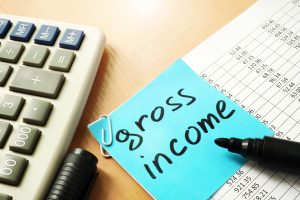Shares Outstanding: Types, How to Find, and Float


Financial lingo can be confusing, but it is nonetheless very important to grasp for those interested in investing in products like stocks, bonds, or mutual funds. Many of the financial ratios used in the fundamental analysis include terms like outstanding shares and the float. Let’s go through the terms shares and float so that next time you come across them, you will know their significance. So far, we’ve focused on shares outstanding, whether basic or diluted, at a fixed point in time.
Stock Splits
They’re simply the total amount of shares currently owned by a company’s shareholders. Let us understand the different types of outstanding shares equation through the explanation below. Here’s what you need to know about outstanding shares and how they’re vital to determining the value of a company. The offers that appear on this site are from companies that compensate us. But this compensation does not influence the information we publish, or the reviews that you see on this site. We do not https://www.bookstime.com/ include the universe of companies or financial offers that may be available to you.
Weighted Average of Outstanding Shares
A company having larger number of shares outstanding will be much more stable than a company which has lower number of share outstanding. The reason being, if the shares are in fewer hands, it will be easier for them to manipulate the stock price by increasing and decreasing the demand and supply. Hence, one can make safer choices and avoid getting trapped https://www.instagram.com/bookstime_inc in manipulative stocks by knowing about outstanding shares and ultimately avoid blowing their capital.
- Trusted by over 2 Cr+ clients, Angel One is one of India’s leadingretail full-service broking houses.
- If a company buys back its own stock, those repurchased shares are called treasury stock.
- While this estimate isn’t perfect, it’s usually close to the stock’s actual shares outstanding.
- The number of outstanding shares of common stock fluctuates frequently, increasing when companies issue additional shares to raise cash, initiate a stock split, or when employees exercise stock options.
- The number of shares outstanding changes over time, sometimes dramatically, which can impact the calculation for a reporting period.
- If you know the market cap of a company and its share price, then figuring out the number of outstanding shares is easy.
Outstanding Shares vs. Treasury Shares


Just take the market capitalization figure and divide it by the share price. The result is the number of shares on which the market capitalization number was based. For example, you can calculate a company’s earnings per share (EPS), a common metric used to compare companies’ performances. You can find a company’s earnings per share by dividing the company’s profit by its outstanding shares of common stock.
What is the difference between authorized shares and outstanding shares?


Get stock recommendations, portfolio guidance, and more from The Motley Fool’s premium services. Volatility profiles based on trailing-three-year calculations of the standard deviation of service investment returns. Our writing and editorial staff are a team of experts holding advanced financial designations and have written for most major financial media publications.


Formula
- It is essential to note that outstanding shares can fluctuate due to events such as stock buybacks or secondary offerings.
- And when shares are bought back, investors end up owning more of the company.
- Therefore, the company currently has authorized 5,000 shares and has 2,000 shares issued and outstanding.
- You can usually find the number of shares outstanding in the stock details section of your charting software.
- Shares outstanding refers to the number of shares of common stock a company has issued to investors and company executives.
In particular, the common stock line of the balance sheet will typically have a number that equals the par value of each share multiplied by the number of shares issued. Therefore, if you have the balance sheet entry and the par value, you can calculate the issued share count. In some cases, there will be a separate line item on the balance sheet for treasury stock, and a similar calculation can tell you the number of shares issued but not outstanding. The weighted average of outstanding shares is a calculation that incorporates any changes in the number of a company’s outstanding shares over a reporting period. The reporting period usually coincides with a company’s quarterly or annual reports. The weighted average is a significant number because companies use it to calculate key financial measures with greater accuracy, such as earnings per share (EPS) for the time period.
Basic shares outstanding represent the actual number of shares outstanding during a period. Diluted shares outstanding include “dilutive” securities that could add to the share count — including options, warrants, and convertible debt. Outstanding shares refer to the authorized shares that have been issued to a company’s shareholders, excluding the treasury stock retained by the company itself. how to calculate number of outstanding shares Founded in 1993, The Motley Fool is a financial services company dedicated to making the world smarter, happier, and richer. The Motley Fool reaches millions of people every month through our premium investing solutions, free guidance and market analysis on Fool.com, top-rated podcasts, and non-profit The Motley Fool Foundation. The number of shares outstanding in a company will often change due to a company issuing new shares, repurchasing shares, and retiring existing shares.
